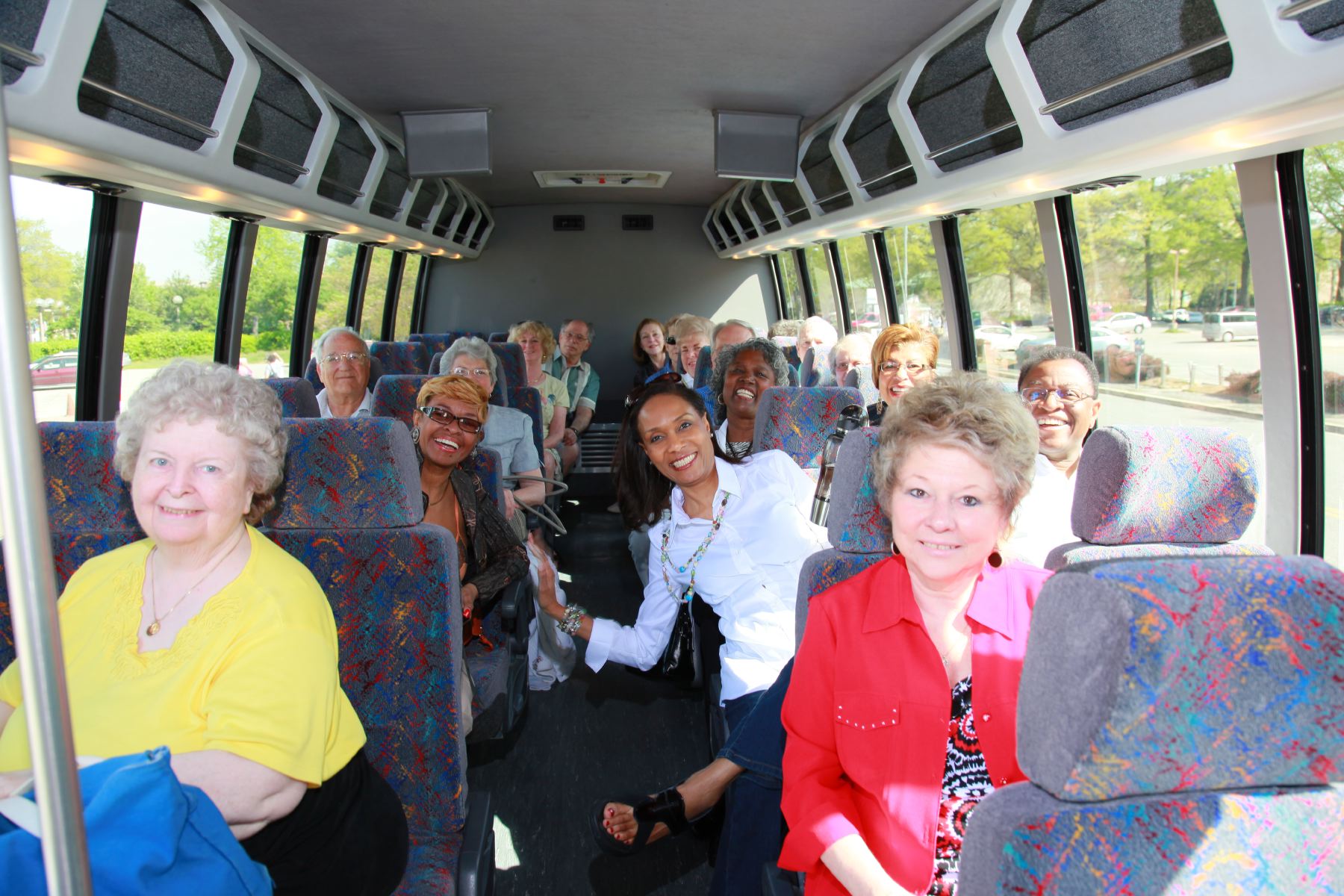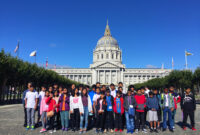Senior bus tours offer a unique blend of adventure and convenience, catering to the specific needs and preferences of older travelers. These tours provide a structured yet flexible way to explore diverse destinations, balancing sightseeing with relaxation and prioritizing accessibility and comfort. This guide delves into the planning, execution, and marketing of successful senior bus tours, covering everything from ideal itineraries and transportation to pricing strategies and targeted marketing campaigns.
From identifying the ideal target demographic and understanding their travel preferences to crafting engaging marketing materials and setting competitive prices, we’ll explore the key elements that contribute to a memorable and rewarding senior travel experience. We’ll examine popular destinations, discuss itinerary design, and highlight essential logistical considerations to ensure a smooth and enjoyable journey for all participants.
Target Audience for Senior Bus Tours
Understanding the senior travel market is crucial for designing successful bus tours. This involves recognizing the diverse needs and preferences within this demographic, ranging from active adventurers to those with mobility limitations. Careful consideration of these factors ensures a positive and enjoyable experience for all participants.
The primary demographic for senior bus tours generally includes individuals aged 65 and older. However, this broad category encompasses a wide spectrum of individuals with varying levels of physical fitness, interests, and financial resources. Further segmentation allows for more targeted marketing and tour design.
Age Segments and Travel Preferences
The interests and travel preferences of seniors often shift with age. The 65-75 age group frequently displays a higher level of physical activity and a preference for more adventurous tours, perhaps involving moderate hiking or longer excursions. Those aged 75-85 might prefer a slower pace, with shorter walking distances and more time for relaxation and sightseeing. Seniors over 85 often require tours with even greater consideration for accessibility and comfort. For example, a tour targeting the 65-75 demographic might include a hike to a scenic overlook, while a tour for the 85+ group would prioritize comfortable transportation and minimal walking.
Needs and Expectations of Senior Traveler Subgroups
Active seniors typically seek tours that offer a balance of sightseeing and physical activity, perhaps including moderate hikes or bike rides. They value opportunities for social interaction and new experiences. Conversely, seniors with mobility limitations require tours that prioritize accessibility, including wheelchair-accessible transportation and accommodations, shorter walking distances, and well-maintained facilities. These individuals might appreciate tours focusing on comfortable sightseeing and leisurely activities. A tour designed for active seniors might incorporate a guided walking tour of a historic city, while a tour catering to seniors with mobility limitations might feature scenic drives and visits to easily accessible attractions.
Ideal Senior Bus Tour Participant Persona
Let’s consider “Eleanor,” our ideal senior bus tour participant. Eleanor is a 72-year-old retired teacher with an active lifestyle and a passion for history and culture. She enjoys moderate physical activity but prefers a comfortable pace. She travels with her husband, Richard, who has some mobility limitations. Eleanor values convenience, comfortable accommodations, and well-organized itineraries. She is interested in learning about new cultures and enjoys socializing with other travelers. She is tech-savvy and appreciates online booking options and access to detailed tour information. Understanding Eleanor’s preferences and needs allows tour operators to craft tours that meet the expectations of a large segment of the senior travel market. This persona guides decisions related to tour design, marketing, and customer service.
Popular Senior Bus Tour Destinations
Choosing the perfect destination for a senior bus tour requires careful consideration of accessibility, comfort, and engaging activities. Many factors influence the selection, including the interests of the group, the time of year, and the desired travel style. This section will highlight popular destinations, categorized for easier planning.
Popular Senior Bus Tour Destinations by Region and Travel Style
Below is a table outlining ten popular destinations for senior bus tours, categorized by region and travel style, along with details on accessibility and key attractions. These destinations offer a variety of experiences, from historical exploration to scenic relaxation.
| Destination | Region | Key Attractions | Accessibility Features |
|---|---|---|---|
| Charleston, South Carolina | Southeast US | Historic architecture, horse-drawn carriage rides, waterfront views, plantation tours. | Many historic sites offer wheelchair access and accessible restrooms. Gentle walking tours are available. |
| Acadia National Park, Maine | Northeast US | Stunning coastal scenery, hiking trails (varying difficulty), carriage roads suitable for wheelchairs, wildlife viewing. | Park offers accessible trails, boardwalks, and visitor centers. Accessible transportation options are available within the park. |
| Williamsburg, Virginia | Southeast US | Colonial Williamsburg living history museum, Governor’s Palace, historic churches, art museums. | Many historic sites offer wheelchair access and accessible restrooms. Wheelchair rentals are available. |
| Niagara Falls, New York/Ontario | Northeast US/Canada | Magnificent waterfalls, boat tours (accessible options available), Journey Behind the Falls, observation towers. | Many attractions offer wheelchair access and accessible restrooms. Accessible transportation options are available. |
| National Mall, Washington D.C. | Mid-Atlantic US | Smithsonian Museums (many offer wheelchair access), monuments, memorials, National Gallery of Art. | The National Mall is largely accessible, with paved pathways and accessible transportation. Many museums offer wheelchair rentals and accessible restrooms. |
| Sedona, Arizona | Southwest US | Red rock formations, scenic drives, hiking trails (varying difficulty), spiritual vortexes, art galleries. | Accessible trails and scenic drives are available. Many shops and restaurants offer wheelchair access. |
| San Antonio, Texas | Southwest US | The Alamo, River Walk, Pearl District, Missions National Historical Park. | The River Walk is largely accessible with paved paths. Many attractions offer wheelchair access and accessible restrooms. |
| Alaska Cruise | Alaska | Glacier viewing, wildlife spotting (bears, whales, etc.), stunning coastal scenery, charming towns. | Many cruise lines offer accessible cabins and amenities. Shore excursions vary in accessibility, so check before booking. |
| Lake Tahoe, California/Nevada | West US | Lake views, scenic drives, casinos, hiking trails (varying difficulty), gondola rides. | Many resorts and casinos offer wheelchair access. Accessible transportation options are available. |
| Hawaii (Oahu or Maui) | Hawaii | Beaches, volcanoes (Hawaii Volcanoes National Park), lush landscapes, historical sites, cultural experiences. | Many hotels and attractions offer wheelchair access. Accessible transportation options are available. Consider the terrain when choosing activities. |
Unique and Less-Traveled Destinations for Seniors
While popular destinations offer many advantages, some seniors might prefer a less crowded experience. Exploring unique and less-traveled locations allows for a more personalized and tranquil journey.
Examples of such destinations include the charming towns of the Shenandoah Valley in Virginia, known for their scenic beauty and relaxed atmosphere; the quaint coastal villages of Maine, offering a peaceful escape; or the beautiful landscapes of the Oregon Coast, providing opportunities for scenic drives and whale watching.
These destinations often offer a more intimate experience, allowing seniors to connect with the local culture and enjoy a slower pace of travel. Accessibility features might be less prevalent than in popular tourist hubs, so careful research is crucial before planning a trip.
Tour Itinerary Design and Structure
Crafting a compelling senior bus tour itinerary requires careful consideration of the unique needs and preferences of the target audience. A well-designed itinerary balances engaging sightseeing with ample opportunities for rest and relaxation, ensuring a memorable and enjoyable experience for all participants. The key lies in thoughtful planning and a flexible approach that accommodates the varying energy levels and physical capabilities of senior travelers.
A successful itinerary prioritizes comfort, accessibility, and a manageable pace. It’s crucial to understand that seniors may require more frequent breaks and a less demanding schedule compared to younger travelers. This involves strategic planning of travel times, activity durations, and the incorporation of rest days to prevent fatigue and enhance overall enjoyment.
Sample 7-Day Senior Bus Tour Itinerary: Charleston, South Carolina
This itinerary focuses on Charleston, South Carolina, known for its charming historic district, beautiful architecture, and relaxed Southern atmosphere. It emphasizes a balance between sightseeing and relaxation, incorporating rest periods and flexible scheduling.
- Day 1: Arrival and Charleston Charm: Arrive in Charleston, check into hotel, afternoon walking tour of the historic French Quarter, enjoying the architecture and atmosphere. Evening: Relaxed dinner at a local restaurant.
- Day 2: History and Horse-Drawn Carriages: Morning: Guided tour of Fort Sumter (ferry included), learning about the start of the Civil War. Afternoon: Relaxing horse-drawn carriage ride through the historic streets. Evening: Free time for shopping or exploring.
- Day 3: Plantation Life and Gardens: Morning: Visit Magnolia Plantation & Gardens, exploring the beautiful grounds and learning about plantation history. Afternoon: Free time for relaxation or optional activities like a cooking class. Evening: Dinner at a restaurant of your choice.
- Day 4: Rest Day and Coastal Relaxation: Morning: Sleep in! Enjoy a leisurely breakfast. Afternoon: Optional: Relax on the beach, explore local shops, or enjoy a spa treatment. Evening: Casual dinner at the hotel or a nearby restaurant.
- Day 5: Rainbow Row and Waterfront Views: Morning: Explore Rainbow Row, admiring the colorful historic houses. Afternoon: Visit the Charleston City Market for souvenir shopping. Evening: Dinner cruise on Charleston Harbor, enjoying the sunset and city views.
- Day 6: Drayton Hall Plantation and Culinary Delights: Morning: Guided tour of Drayton Hall Plantation, a preserved plantation offering insights into colonial life. Afternoon: Charleston Food Tour, sampling local delicacies and learning about the city’s culinary heritage. Evening: Farewell dinner at a fine-dining restaurant.
- Day 7: Departure: Enjoy a final breakfast in Charleston before departing for home.
The Importance of Incorporating Rest Days and Flexible Scheduling
Rest days are crucial for senior travelers. They provide opportunities to recover from fatigue, allowing participants to enjoy the remaining tour days at their best. Flexible scheduling accounts for unforeseen circumstances, such as unexpected delays or changes in participants’ energy levels. A well-structured itinerary includes buffer time to accommodate these possibilities. For example, instead of rigidly scheduling activities from 9am-5pm, a flexible schedule might allocate 9am-12pm for a particular activity, allowing for adjustments based on participant needs and pace.
Balancing Sightseeing with Relaxation and Downtime
A balanced itinerary incorporates a mix of structured activities and free time. This approach ensures that participants don’t feel overwhelmed by a constant stream of sightseeing. Downtime allows for personal reflection, relaxation, and pursuing individual interests. For instance, offering optional activities alongside main scheduled events allows for personalized experiences and cater to different preferences. A well-structured itinerary will include ample opportunities for relaxation, such as leisurely lunches, afternoon breaks, and evenings free from structured activities.
Marketing and Promotion of Senior Bus Tours
Marketing senior bus tours requires a nuanced approach, focusing on the specific needs and preferences of this demographic. Successful campaigns emphasize trust, convenience, and the enriching experiences offered, rather than solely focusing on price. Strategies must resonate with seniors’ values and lifestyles to achieve optimal results.
Marketing Campaign Design for Senior Travelers
A targeted marketing campaign for senior travelers should leverage multiple channels to reach a broad audience while maintaining a consistent brand message. Print advertising in publications frequented by seniors, such as AARP The Magazine or local community newspapers, remains effective. Digital marketing should focus on user-friendly websites and targeted online advertising on platforms like Facebook and retirement-focused websites. Direct mail campaigns, using high-quality brochures and personalized letters, can also yield strong results. The messaging should emphasize the ease and convenience of group travel, highlighting aspects such as worry-free transportation, pre-arranged accommodations, and guided tours that eliminate the need for independent navigation. It should also showcase the social aspects of the tours, emphasizing opportunities for camaraderie and shared experiences.
Examples of Compelling Marketing Materials
A brochure could feature large, high-quality images of seniors enjoying themselves on a tour, perhaps laughing together over a meal in a charming restaurant or admiring a scenic vista. The text should use a clear, concise font size easily readable by older eyes, avoiding overly dense paragraphs. The website copy should clearly outline the itinerary, including details about accommodations, meals, and activities. Testimonials from past participants, highlighting their positive experiences, could build trust and credibility. For example, a testimonial could read: “The tour was exceptionally well-organized, and the tour guide was incredibly knowledgeable and friendly. I felt safe and comfortable the entire time, and made some wonderful new friends!”
Strategies for Building Trust and Credibility
Building trust with senior travelers is paramount. This can be achieved through transparent communication, clearly outlining tour costs, inclusions, and any potential additional expenses. Displaying accreditation from reputable organizations, such as the Better Business Bureau, can further enhance credibility. Offering a money-back guarantee or a flexible cancellation policy can alleviate concerns and build confidence. Partnering with reputable travel insurance providers can also demonstrate a commitment to the safety and well-being of senior travelers. Including contact information and readily available customer service options is vital for addressing any concerns promptly.
Using Imagery to Showcase the Tour Experience
Imagery plays a crucial role in attracting senior travelers. Instead of relying on generic stock photos, use images that authentically depict the tour experience. For example, a photograph could showcase a group of seniors happily chatting on a comfortable tour bus, the sun shining on their faces. Another could show seniors engaged in a lively discussion with a local artisan in a quaint village. An image depicting a serene garden at a historical site, with seniors leisurely strolling and enjoying the scenery, would convey a sense of tranquility and relaxation. The focus should be on genuine smiles, positive interactions, and scenes that evoke feelings of comfort, enjoyment, and shared experience. Images should be bright, well-lit, and sharply focused, ensuring they are easily viewable by seniors with potential vision impairments.
Outcome Summary
Successfully operating senior bus tours requires a careful balance of meticulous planning, a deep understanding of the target audience, and a commitment to providing a safe, comfortable, and enriching travel experience. By addressing the unique needs and preferences of older travelers, tour operators can create memorable journeys that foster independence, social connection, and the exploration of new and exciting destinations. This comprehensive guide provides the framework for creating and executing highly successful senior bus tours that cater to a growing and discerning market.



